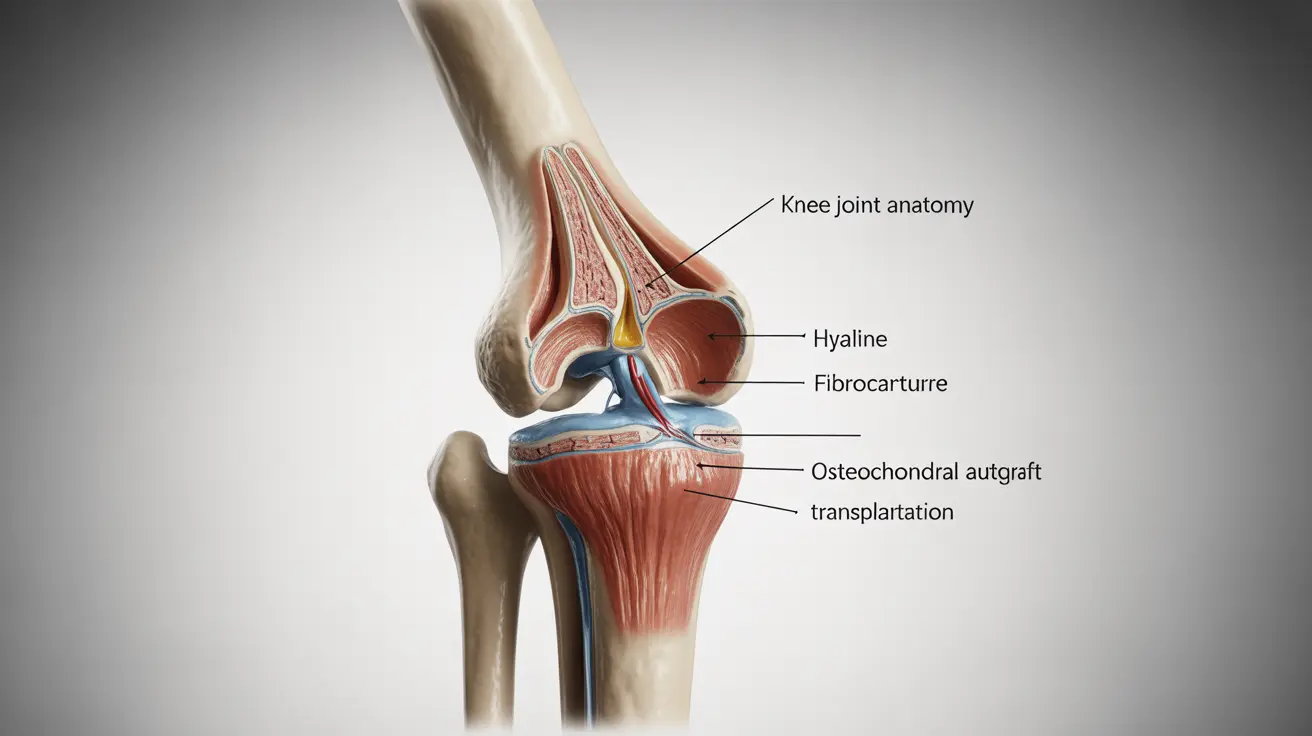This common blood disorder can lead to fatigue and weakness, affecting millions worldwide, with significant impacts on public health, particularly in developing countries. Anemia comes in various forms, including:
- Iron-deficiency anemia: the most prevalent type, often due to poor diet or chronic blood loss.
- Vitamin-deficiency anemia: caused by a lack of vitamin B12 or folate.
- Hemolytic anemia: where red blood cells are destroyed faster than they can be made.
- Aplastic anemia: a rare condition where the body doesn't produce enough new blood cells.
Understanding Anemia
Anemia is a medical condition where the blood lacks enough healthy red blood cells (RBCs) or hemoglobin, the main part of RBCs that binds oxygen. This deficiency means that not enough oxygen reaches the body's tissues, leading to fatigue and other symptoms.
Role of Red Blood Cells and Hemoglobin:
- RBCs transport oxygen from the lungs to the body's tissues and return carbon dioxide from the tissues back to the lungs.
- Hemoglobin within these cells binds to oxygen; low hemoglobin levels typically indicate anemia.
Common Causes of Anemia:
- Nutritional Deficiencies: Lack of iron, vitamin B12, or folate can lead to decreased RBC production.
- Chronic Conditions: Diseases like cancer or kidney disease can interfere with RBC production.
- Blood Loss: Heavy periods or gastrointestinal bleeding can cause iron-deficiency anemia.
- Bone Marrow and Stem Cell Problems: Conditions like leukemia or myelofibrosis can affect blood production.
- Hemolysis: Certain diseases and medications can lead to the destruction of RBCs.
- Genetic Factors: Sickle cell anemia or thalassemia affect hemoglobin and can lead to anemia.
Understanding the underlying cause is crucial for effective treatment, as the management of anemia varies greatly depending on its origin.
Types of Anemia
Anemia manifests in several forms, each with distinct causes and treatments:
Iron-Deficiency Anemia:
- The most common type, resulting from a shortage of iron, which is necessary for hemoglobin production.
- Causes include inadequate dietary intake, chronic blood loss, or increased need during pregnancy.
Vitamin Deficiency Anemia:
- Caused by a lack of vitamin B12 or folate, both vital for RBC production.
- Can result from poor diet, certain intestinal disorders, or metabolic issues.
Hemolytic Anemia:
- Occurs when RBCs are destroyed faster than they can be made, due to factors like autoimmune diseases, certain medications, or hereditary conditions.
Aplastic Anemia:
- A rare, life-threatening anemia caused by the bone marrow's failure to produce sufficient RBCs.
- Can be triggered by autoimmune diseases, exposure to toxic chemicals, or certain medications.
Anemia of Chronic Disease:
- Often accompanies chronic conditions like cancer, HIV/AIDS, rheumatoid arthritis, kidney disease, and other inflammatory diseases.
- These conditions can interfere with the production of RBCs and the lifecycle of hemoglobin.
Each type of anemia requires a tailored approach to treatment, ranging from dietary changes and supplements to more complex medical interventions.
Recognizing the Symptoms of Anemia
Anemia's hallmark is a general feeling of fatigue, but its symptoms can vary widely based on the type and severity:
Common Symptoms Across Different Types of Anemia:
- Fatigue and weakness are almost universal.
- Shortness of breath, especially during exercise.
- Pale or yellowish skin.
- Dizziness or lightheadedness.
- Cold hands and feet.
- Chest pain, rapid heartbeat, or shortness of breath.
Specific Symptoms Related to Various Types of Anemia:
- Iron-deficiency anemia may cause cravings for non-nutritive substances like ice or dirt (pica).
- Vitamin deficiency anemia might lead to numbness in the hands and feet, balance problems, and cognitive disturbances.
- Hemolytic anemia can result in jaundice and dark urine.
- Aplastic anemia often presents with frequent infections and unexplained bruising or bleeding.
Severity of Symptoms and Potential Complications:
- Mild anemia may go unnoticed or be dismissed as general exhaustion.
- Moderate to severe anemia can significantly impair daily functioning and quality of life.
- Severe, untreated anemia can lead to heart and organ damage due to oxygen deprivation, potentially resulting in life-threatening complications.
Recognizing these symptoms is crucial for timely diagnosis and treatment to prevent the condition from worsening.
Who is at Risk?
Anemia can affect anyone but certain groups are at higher risk due to various factors:
Risk Factors for Developing Anemia:
- Dietary Deficiencies: Insufficient intake of iron, vitamin B12, or folate.
- Chronic Conditions: Diseases like kidney failure or cancer that affect blood production.
- Menstruation: Women with heavy periods are at risk for iron-deficiency anemia.
- Pregnancy: Increased blood volume during pregnancy can dilute red blood cells.
- Age: Older adults may have poorer diets and chronic conditions that contribute to anemia.
- Genetic Predisposition: Conditions like sickle cell anemia or thalassemia are inherited.
Populations Most Affected by Anemia:
- Children and Adolescents: Rapid growth can increase the need for iron and other nutrients.
- Women of Childbearing Age: Due to the loss of blood during menstruation and the increased demand for blood supply during pregnancy.
- Elderly: Often have multiple health issues that can lead to anemia.
- Low-Income Groups: May have limited access to nutrient-rich foods, increasing the risk of dietary deficiencies.
Understanding these risk factors is vital for prevention and early intervention, particularly in vulnerable populations. Regular screening and dietary assessments can help manage and reduce the risk of anemia.
Laboratory Tests Used in Diagnosis
Diagnosing anemia typically involves several laboratory tests to determine the type and cause:
Complete Blood Count (CBC):
- Measures various components of blood, including RBC count, hemoglobin, hematocrit, and mean corpuscular volume (MCV).
- Low hemoglobin and hematocrit levels are direct indicators of anemia.
- MCV shows the size of red blood cells, helping to classify anemia as microcytic, normocytic, or macrocytic.
Iron Studies:
- Serum Ferritin: Indicates the amount of stored iron in the body; low levels suggest iron-deficiency anemia.
- Serum Iron: Measures the iron in the blood; low levels may indicate iron deficiency.
- Total Iron-Binding Capacity (TIBC): Often increased in iron-deficiency anemia as the body tries to capture more iron.
Vitamin B12 and Folate Levels:
- Deficiencies in these vitamins can lead to megaloblastic anemia, where red blood cells are larger than normal.
Reticulocyte Count:
- Assesses the number of young red blood cells in blood, indicating the bone marrow's response to anemia.
Bone Marrow Biopsy:
- Performed in cases where the cause of anemia is unclear or when a bone marrow disorder is suspected.
- Helps diagnose conditions like aplastic anemia or myelodysplastic syndromes.
These tests provide a comprehensive view of blood health and are crucial in diagnosing the specific type of anemia, guiding appropriate treatment.
Interpreting Laboratory Results
Interpreting the results of laboratory tests for anemia is a critical step in diagnosis and treatment planning:
Understanding the Significance of Different Test Results:
- A low hemoglobin or hematocrit value in the CBC indicates anemia, while the MCV helps classify its type.
- Low serum ferritin is a hallmark of iron deficiency, whereas high TIBC suggests the body's increased demand for iron.
- Abnormal vitamin B12 or folate levels point towards megaloblastic anemia.
The Importance of a Differential Diagnosis:
- Anemia is a symptom, not a disease, so identifying its cause is crucial.
- A differential diagnosis considers all possible reasons for the anemia, ruling out other conditions with similar presentations.
- This may involve correlating laboratory findings with clinical signs and symptoms, and sometimes additional testing.
When to Consider a Referral to a Hematologist:
- If initial tests indicate a complex form of anemia, such as hemolytic or aplastic anemia.
- When anemia is severe or the cause remains unclear despite initial evaluations.
- If the patient has a known hematological disorder or a family history suggesting a genetic cause.
A thorough analysis of lab results, often in conjunction with a specialist, ensures accurate diagnosis and effective management of anemia.
Treatment Options
Effective treatment of anemia is tailored to its type and cause:
General Treatment Strategies for Anemia:
- Addressing underlying causes, such as controlling bleeding or treating infections.
- Supplemental iron, vitamin B12, or folate for deficiencies.
- Blood transfusions in cases of severe anemia or acute blood loss.
Treatment Specific to the Type of Anemia:
- Iron-Deficiency Anemia: Oral iron supplements or, in severe cases, intravenous iron.
- Vitamin Deficiency Anemia: High-dose vitamin B12 injections or oral folate supplements.
- Hemolytic Anemia: Treatments may include steroids, immunosuppressive drugs, or surgery (e.g., spleen removal).
- Aplastic Anemia: May require bone marrow transplants or immunosuppressive therapy.
- Anemia of Chronic Disease: Managing the underlying chronic condition is often the focus.
The Role of Diet and Supplements:
- A diet rich in iron (red meat, beans, fortified cereals) and vitamins (fruits, vegetables) can prevent or treat some anemias.
- Over-the-counter supplements can help, but they should be used under a doctor's supervision to avoid excess intake and potential harm.
Monitoring and follow-up are essential to ensure the treatment is effective and to adjust as necessary.
Managing Anemia
Managing anemia often involves a combination of medical treatment and lifestyle adjustments:
Lifestyle Changes and Home Management:
- Dietary Adjustments: Incorporate iron-rich foods like leafy greens, beans, and lean meats; vitamin C can enhance iron absorption.
- Regular Exercise: Moderate physical activity can improve energy levels and overall health.
- Adequate Rest: Ensure sufficient sleep to help the body recover and produce more red blood cells.
Monitoring and Follow-Up Tests:
- Regular CBC Tests: To monitor hemoglobin levels and the effectiveness of treatments.
- Iron and Vitamin Levels: Periodic checks to ensure that dietary supplements are correcting deficiencies.
- Reticulocyte Count: To assess the bone marrow's response to treatment.
When to Seek Further Medical Attention:
- Persistent Fatigue or Worsening Symptoms: If symptoms don't improve or worsen, despite treatment.
- Unexpected Side Effects: Such as reactions to supplements or medications.
- New Symptoms: Like shortness of breath or chest pain, which could indicate complications.
Effective anemia management is a proactive process, requiring ongoing communication with healthcare providers to ensure treatments are working and to make adjustments as needed.
Prevention and Awareness
Preventing anemia involves a multifaceted approach that includes lifestyle choices, regular screenings, and public health initiatives:
Strategies for Preventing Anemia:
- Nutritional Intake: A balanced diet rich in iron, vitamin B12, and folate is essential. Consider supplements if dietary intake is insufficient.
- Preventive Measures During Pregnancy: Regular prenatal care and iron supplements as recommended.
- Control of Blood Loss: Managing conditions like ulcers or heavy menstruation that can lead to blood loss.
The Importance of Regular Screening for At-Risk Populations:
- Women of Childbearing Age: Due to the risk of iron-deficiency anemia from menstrual blood loss and pregnancy.
- Infants and Young Children: Early screening, as iron deficiency can affect development.
- Elderly Individuals: Who may have dietary deficiencies or chronic diseases that can lead to anemia.
Awareness Campaigns and Education:
- Public Health Initiatives: To increase knowledge about the importance of a nutrient-rich diet and the risks of anemia.
- Community Health Programs: Offering screenings and education in areas with high rates of anemia.
- Healthcare Provider Training: To ensure they discuss anemia prevention with patients and recognize symptoms early.
Awareness and education are key in preventing anemia, especially in vulnerable groups. Regular check-ups and a healthy lifestyle can significantly reduce the risk of developing anemia.
Anyone experiencing potential symptoms should consult a healthcare provider for a simple blood test. High-risk groups, such as pregnant women and the elderly, should consider regular screening.
Anemia is a manageable condition with proper care and treatment. Staying informed, proactive screening, and seeking medical advice are key steps in combating this widespread health issue.




